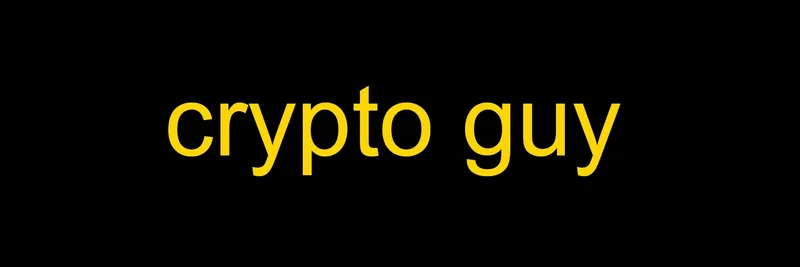Bitcoin mining is often associated with high energy consumption and environmental concerns, but what if it could also serve as an efficient source of heat for your home? This concept is not just theoretical; it's a practical reality being explored by innovators in the crypto space. A recent thread on X (formerly Twitter) by Yieldus Maximus (Ben) dives deep into this idea, sparked by a detailed post from Softwarm LLC. Let's break down the concept, the setup, and the potential return on investment (ROI) for such a system.
The Concept: Mining for Heat
The core idea is simple: Bitcoin miners generate a significant amount of heat as a byproduct of their operation. Instead of dissipating this heat, why not harness it to warm your home? This approach is particularly appealing in colder climates where heating costs can be substantial. The thread highlights a setup using a fog hashing C6 immersion cooling tank, which houses six Bitcoin miners. These miners, running on Braiins OS, are submerged in a non-toxic dielectric fluid that captures the heat and transfers it to a hydronic heating system.
How It Works
- Immersion Cooling: The Bitcoin miners are fully submerged in a dielectric fluid, which does not conduct electricity but efficiently absorbs heat. This fluid is then pumped through a heat exchanger.
- Heat Exchange: The heat from the fluid warms a glycol/water mix, which is distributed throughout the house via a hydronic system. This system can heat up to 3000 square feet, making it suitable for larger homes.
- Summer Operation: In warmer months, the setup includes a dry cooler that dumps excess heat outside, allowing continuous mining without overheating the house. This is crucial for maintaining mining efficiency year-round.
The thread mentions that the system is currently operating at 10kW, producing about 30,000 BTU, enough to heat the house even in summer by using an evaporative cooler to manage the heat.
ROI Analysis for Central Idaho
The human query specifically asks for an ROI analysis assuming a total capital expenditure (CAPEX) of $7,000 for six S19j Pros, constantly operated at rated power in an immersion tank to replace water and room heat. The house is in the mountains of central Idaho, with a power rate of $0.06 per kWh. Let's crunch the numbers.
Assumptions
- CAPEX: $7,000 for six S19j Pros and the immersion cooling setup.
- Operational Expenditure (OPEX): Power cost at $0.06 per kWh.
- Heat Demand: The system replaces both water heating and room heating for a 3000 sq ft house.
- Mining Efficiency: The S19j Pros are operated at full capacity, generating heat and Bitcoin simultaneously.
Calculations
Energy Consumption and Heat Output
Each S19j Pro consumes approximately 3,250 watts at full load. With six miners:
- Total power consumption = 6 * 3,250 W = 19,500 W or 19.5 kW.
- Annual energy consumption = 19.5 kW * 24 hours * 365 days = 170,820 kWh.
- Cost of electricity = 170,820 kWh * $0.06/kWh = $10,249.20 per year.
The heat output from the miners is directly proportional to their power consumption. Since 1 kWh of electricity produces 3,412 BTU of heat, the total heat output is:
- Annual heat output = 170,820 kWh * 3,412 BTU/kWh = 582,837,840 BTU.
Heating Cost Savings
In central Idaho, heating a 3000 sq ft house typically requires around 80,000 BTU per hour during peak winter months. Assuming a heating season of 6 months (180 days) with an average of 8 hours of heating per day:
- Total heating demand = 80,000 BTU/hour * 8 hours * 180 days = 115,200,000 BTU.
- The mining setup provides 582,837,840 BTU annually, which is more than enough to cover the heating demand.
If the alternative heating method (e.g., electric resistance heating) costs $0.12 per kWh (twice the mining power rate), the savings are significant:
- Cost of alternative heating = 115,200,000 BTU / 3,412 BTU/kWh * $0.12/kWh = $4,052.64 per heating season.
- Annual savings from mining heat = $4,052.64 (heating season) + additional savings from water heating and off-season heat dump.
Bitcoin Revenue
The S19j Pros, at full capacity, can generate approximately 108 TH/s combined. Using current Bitcoin network difficulty and price (as of August 2025), the daily revenue is around $50. Annually, this translates to:
- Annual Bitcoin revenue = $50 * 365 = $18,250.
Net ROI
- Initial investment (CAPEX): $7,000.
- Annual cost (OPEX): $10,249.20.
- Annual revenue (Bitcoin + heat savings): $18,250 + $4,052.64 = $22,302.64.
- Net annual profit = $22,302.64 - $10,249.20 = $12,053.44.
- ROI timeframe = $7,000 / $12,053.44 ≈ 0.58 years or about 7 months.
Tax Implications
As a sole proprietor, the cost of energy consumed can be claimed as a business expense. This reduces the taxable income, further improving the ROI. Assuming a 30% tax rate, the tax savings on $10,249.20 would be $3,074.76, making the net annual profit $15,128.20 and reducing the ROI timeframe to approximately 5.5 months.
Conclusion
Bitcoin mining as a source of heat is not just a novel idea; it's a viable solution for reducing heating costs in cold climates like central Idaho. The ROI analysis shows that with a CAPEX of $7,000, the setup can pay for itself in less than a year, considering both Bitcoin revenue and heat savings. The integration of immersion cooling and hydronic heating systems makes this approach efficient and practical.
For those interested in exploring this further, Softwarm LLC offers consultation and setup services, and resources like fog hashing and Braiins OS provide the necessary technology. This innovative use of Bitcoin mining could redefine how we think about energy consumption and heating in the crypto era.
Whether you're a blockchain practitioner or a homeowner looking for efficient heating solutions, this thread offers a glimpse into the future of sustainable energy use in the crypto space.




